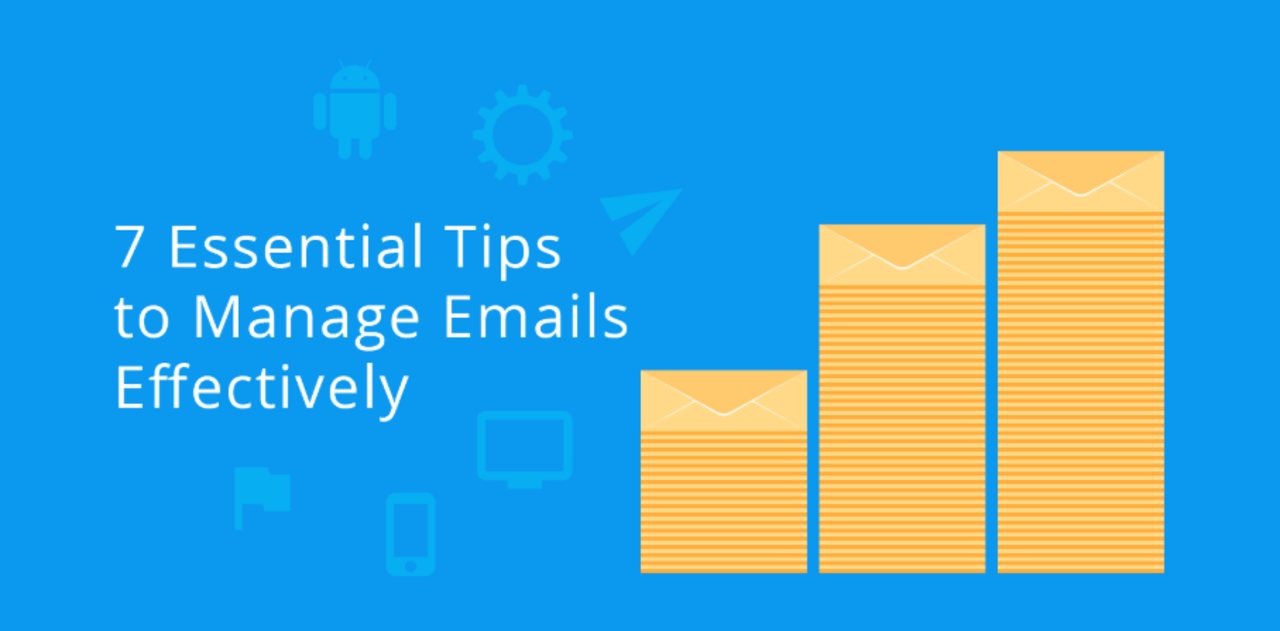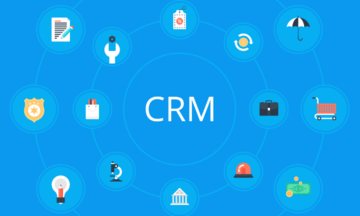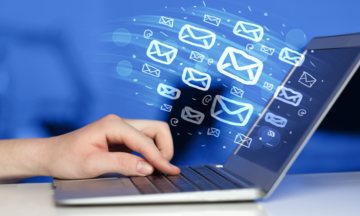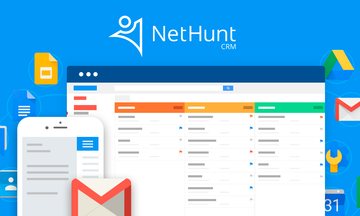1. Forward messages to one inbox
Before you even start managing your inbox, ask yourself - "Which one of
them?". Most of us don't have just a single email address.
There's your personal inbox, your work email, your "old" or
college mailbox, junk inbox, etc. Not all of them are important, but you
might occasionally be receiving some messages which require your immediate
attention. If that's the case, then you might find yourself checking
multiple inboxes in a row, monitoring them for updates, not prioritizing your
work and damaging the overall productivity. There are several things you can
do to avoid this.
First of all, completely avoid checking all of your other inboxes, except for
the one you use for work. All your social media notifications, sale
promotions, and updates should not interrupt your workflow. However, if you
have multiple work inboxes (let's say one is your personal work email,
another is your company's support inbox, etc.) it would be better to at
least not keep them all open at the same time. The best solution is to set up
automatic email forwarding in Gmail (also known as Gmail mass forward).
Once a new message arrives to, let's say, your personal email address, it
will be automatically forwarded to your work inbox. This means that you can
be receiving messages addressed to your multiple Gmail accounts inside a
single inbox. This won't reduce the email clutter, but you won't be
constantly switching between multiple inboxes or missing some important
messages on the other accounts.
To set up automatic email forwarding, go to the Settings of the account
you'll be forwarding messages from and open the Forwarding and POP/IMAP
tab. Add a forwarding address of an account you want to receive messages in
and a confirmation email will be sent there. Additionally, you can then
configure what Gmail should do with the messages in the source inbox,
including archiving them or marking as read.
Congratulations on making your first step towards managing emails
effectively!
2. Clean up your inbox
You've probably already heard many bits of advice about managing emails
effectively and what to do with new messages so they don't clutter your
inbox. They are all great, but what should you do about everything that is
already in your inbox? About several years of communication and notifications
you've never bothered to delete or archive! If you'd like to change
that and see your inbox cleared, there are better ways than manually going
through the emails one by one.
If you have a lot of unarchived or even unread messages but would like to
clean up the inbox, you'll have to sort out these messages first. And, as
you haven't touched those emails in months, they are probably unimportant
or irrelevant to your current activities. Basically, you can delete or
archive them without a second thought. It's generally advised to remove
messages that are at least a month old as newer messages might still be
relevant. Doing this manually would be a chore, so you can use Gmail advanced
search for that.
The search in Gmail is very flexible, allowing you to find all emails meeting
some criteria. You can find emails which you've received a month ago or
earlier. Enter "older_than:1m" in the search bar where
"1m" means one month (you can go with 2 just to be sure). Click on
the Select button (the one with a checkbox) and select All. This will select
all messages on the first page, but if you want to select all messages in the
inbox, click on the "Select all conversations that match this
search" on top of the search result. Now you can Archive (or even
delete) every old message and keep your inbox clean.
NetHunt CRM tip: Advanced record search
NetHunt has a similar advanced search feature, complementing the search in
Gmail. You can search through NetHunt CRM folders and records using the same
Search bar. The search syntax is very similar, allowing you to find and
filter records based on the fields. You can check out the advanced search
capabilities of NetHunt CRM in our blog.

3. Touch It Once email management rule
How often do you open an email, read it and... do nothing about it? No, if it
demands an answer you'd probably give one, but even after that, the email
remains hanging in your inbox. For such cases, there's another useful
email management rule known as "Touch It Once". It means that once
you've opened an email, you MUST do something about it and don't get
back to it later. This means that after reading it you must archive or either
delete it so it doesn't clutter your inbox. If it's some sort of a
task for you, you must put it down somewhere else (into your to-do list, put
a To-Do label on it, set a follow-up, etc) and then archive it.
As for the times when you've replied to a message and need to archive
them, you'll usually have to go back to the inbox and manually archive
it. You can simply forget to do so in favor of other pressing matters, so
Gmail s another tool for inbox management pros. Enable Send and Archive
button in the General tab of the Settings and now, when replying to a
conversation, a new "Send and Archive" button will appear next to
the usual send.
4. Use stars to mark important messages
There are several ways of helping yourself in remembering to get back to a
certain email later. You can mark an email as unread so it would stay in your
inbox, but you'll have to do so each time you open that email just to
check what's so important about it. Another more convenient option is to
star a message. You can do so in one click and it'll allow you later to
easily find and group those messages. While it's a good option, it still
lacks some flexibility.
By default, Gmail allows you to set a single star (a yellow one) for Gmail
messages. In case this is not enough for you, you can enable more stars and
some other symbols for marking your messages. Go to Settings and, under the
General tab, you can manage the available stars options. This includes other
colors and some other symbols which would attract your attention and
categorize your messages. But there are obvious downsides to gmail stars:
you'll have to cycle through them all before you get to the one you want
and there's no way to make Gmail sort by star color if you want an
additional layer of organization.
NetHunt CRM tip: Use Follow-ups
Follow-ups in NetHunt CRM are similar to the native Gmail stars, but help you
to organize emails and records even better. You can set color-coded flags for
records and emails and NetHunt CRM will create a follow-up for it. But the
most important aspect of Follow-ups is that you can set a date for them,
letting you quickly create tasks with due dates. Follow-ups are all grouped
by due dates and it will make Gmail show tasks in sidebar where they are
easily accessable.
5. Organize messages using labels
Sometimes it comes as a surprise that there are no folders in Gmail. So the
question arises: how to manage Gmail inbox without folders? You can't
create one and store emails inside like you do with files in Windows or
macOS. As an alternative, Gmail suggests you use labels. They help you to tag
emails, organize and find them faster by those tags. One major advantage of
labels over folders is that an email can have several labels, while it can
not be a part of several folders. This makes it easier to categorize messages
when they fall under different categories.
Gmail has several labels preconfigured by default (inbox, drafts, archived
and everything else in the left sidebar is, technically, labels), but you can
create your own labels. Go to Settings and open the Labels tab. At the
bottom, you can create a new label and add it to the sidebar. This would
allow you to assign custom labels to every message you need. Additionally,
you'll see those labels in the inbox which is great for navigation.
NetHunt CRM tip: folders, records, and display fields
You can create folders in NetHunt CRM. These folders store records with
attached emails and other information in the record's fields. The data
from fields can be displayed inside emails similar to labels. Unlike static
labels, this information is always up-to-date, allowing you to check the
status of the emails (for example, if you're managing sales in the inbox,
NetHunt CRM will show you in which pipeline stage the contact is). This makes
NetHunt an effective Gmail email manager in addition to being a customer
relationship management system.
6. Use canned responses for recurring messages
There are often times when you need to send the same message over to
different recipients. You can either have a separate document with drafts of
such messages or paste in old messages from Sent. But this isn't very
comfortable, as it's always better to the necessary draft exactly where
you'll be using it, i.e. in the email compose window. For this purpose,
you can enable canned responses in Gmail Labs.
One of the most popular Gmail inbox management tips is to go to Settings and
under the Labs tab enable Canned responses. Now, after composing a message,
you'll be able to name and save that message for later use. Canned
responses are available by clicking on the arrow in the bottom left corner of
the Compose windows. This gives you a quick access to templates, allowing you
to quickly send often used messages or to provide standardized answers to
frequently asked questions.
7. Create searchable email subjects
As good as the search capabilities of Gmail are, even they can hardly help if
you don't remember anything about the message to use as the search query.
You can always try searching by a name, date or apply search filters, but
still, that is if you remember some details about the message. To completely
remove a "remembering" part out of your emails and to especially
improve the email management for small business, you need to use a system
which will work for you every single time.
It's always better to compose as detailed subject lines for emails as
it's appropriate. If you're managing sales through email, do not send
messages with subject lines like "Nice to meet you" or
"Follow-up about the offer", not only because they are irrelevant
and might seem spammy, but also as they carry no organizational substance.
Always state the contacting reason as clear as it's possible. A subject
like "Meeting with J Smith on 21 October 2016 about the special
offer" immediately explains everything and it's easier to search
because you'll remember at least the topic, or date, or a person and
it'll make it easier to search in the list of emails if Gmail doesn't
immediately suggest the correct message.









